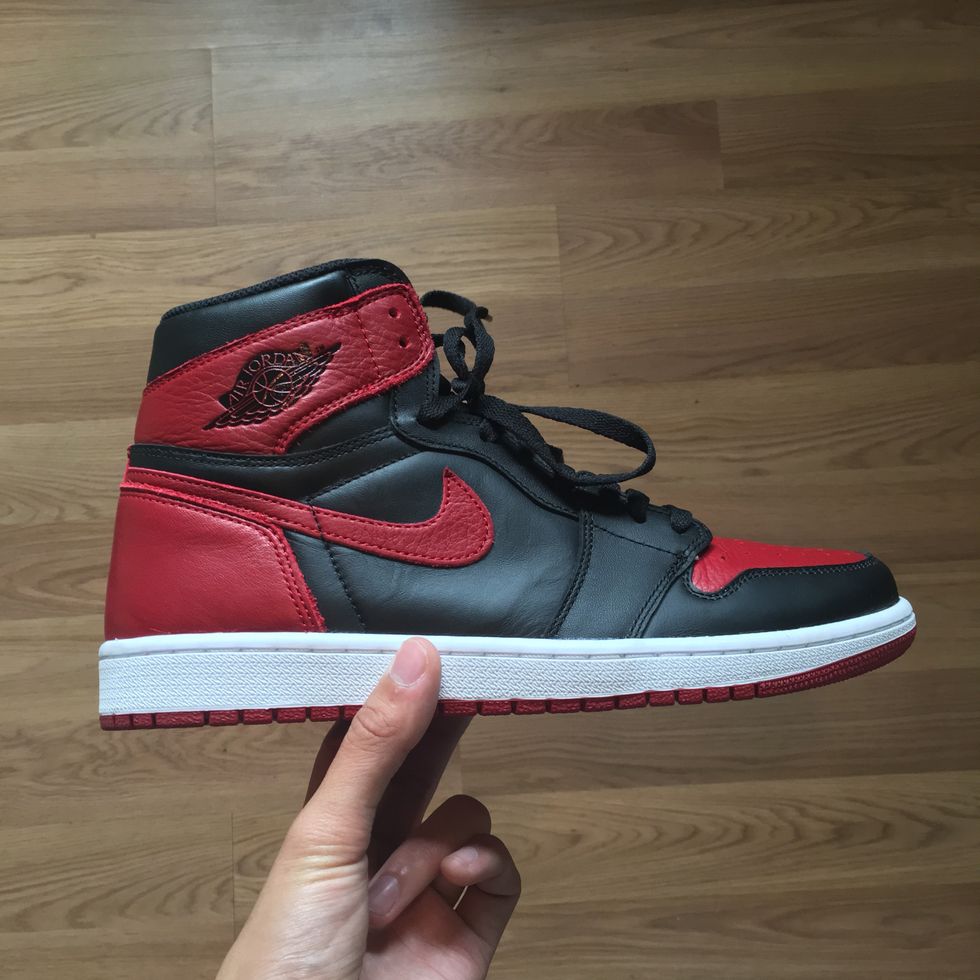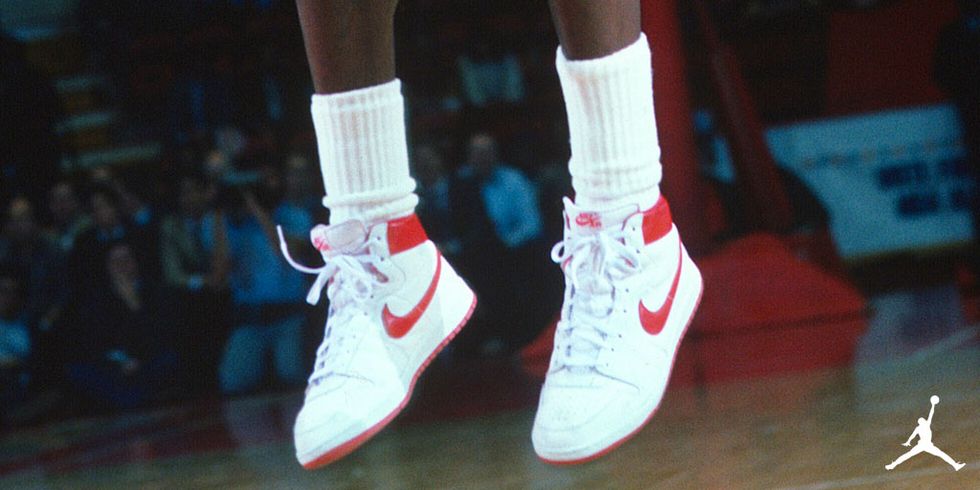Highly coveted by both sneakerheads and streetwear enthusiasts alike, the Air Jordan 1 carries a lot of history behind it. Considered to be one of the holy grails of sneakers, they continue to be re-released in different colors and with different designer collaborations.
Originally designed by Peter C. Moore (not to be confused with Tinker Hatfield, who designed Air Jordan models 3-15, 20, and 23), the iconic high-top sneaker was first produced in 1984 as Michael Jordan's signature sneakers. The prototype for the Jordan 1 was actually called the Nike Air Ships.
NBA Commissioner David Stern banned the Air Ships from the NBA for not conforming to uniform policy standards, but Michael Jordan continued to wear them, while Nike happily paid the $5,000 fine each game.
While the shoes were banned from the NBA, Nike took advantage of this free publicity and marketed the Jordan 1's as giving basketball players an unfair advantage in games. Many of Nike's advertisements promoted the shoes in this fashion, such as the advertisement shown below.
Air Jordan 1 Commercial: Banned.
The shoe itself was considerably more simplistic than the high-tech basketball shoes of today. They typically had a mostly leather upper. In more recent releases (2011 and 2016), they have been released with naturally dyed grained leather. The sole contains Nike Air technology to provide cushioning in the sole. In the original production wave, the sneakers would come from one of many factories, resulting in varied qualities between pairs. The red and black color-blocking of the shoe was innovative for its time, as most NBA regulated shoes were white or gray.
Peter C. Moore, the designer behind the sneakers, also designed the Air Jordan Jumpman logo, as well as the Air Jordan Wings logo. Moore claims the inspiration for the Jumpman logo was not from an actual dunk by a basketball player, but rather a grand jeté: a ballerina technique. The Wings logo was also inspired by Moore's life outside of basketball: Moore was on a flight and doodled the logo on a napkin after seeing a child wearing a replica pilot wings pin given to him by the airline. He associated flight with Jordan's basketball abilities, and the rest is history. You may also recognize Moore as a logo designer because he also designed the Adidas Three Bars logo after leaving Nike.
Originally sold for $20 in 1985, the Air Jordan 1 continues to release different colorways every year, with an increased retail price of $160. With a Nike Flyknit version and an Off-White collaboration slated for a near release, it's interesting to see where the silhouette will take us next.











































